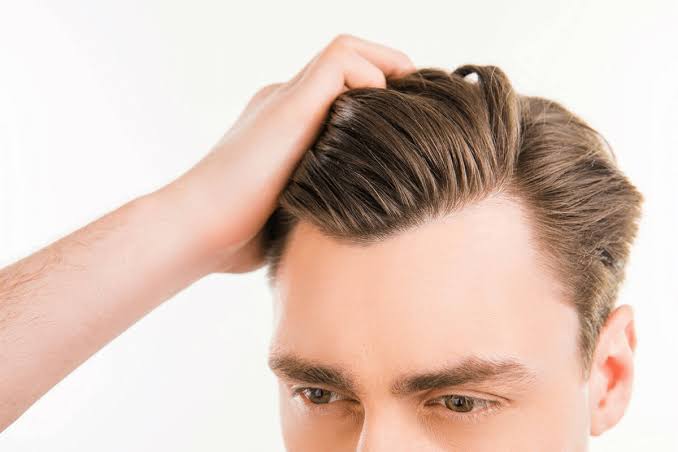If you’re considering this procedure to combat hair loss, understanding how it works is crucial. DHI, or Direct Hair Implantation, is a cutting-edge technique that offers natural-looking results. Let’s dive into the fascinating world of hair transplantation science.
DHI Technique Explained
Direct Hair Implantation (DHI) revolutionizes the hair transplantation process. Using a Choi implanter pen, surgeons meticulously implant hair follicles directly into the recipient area without creating incisions beforehand. This technique eliminates the need for scalpels, reduces trauma to the scalp, and allows for greater control over hair angle and density. Compared to traditional FUE (Follicular Unit Extraction), DHI offers unparalleled precision and seamless integration with existing hair.
Harvesting and Implantation Process
The journey to a fuller head of hair begins with the harvesting and implantation process. Skilled technicians meticulously extract donor follicles from the scalp’s donor area using specialized tools. These follicular units are then carefully implanted into the recipient area using the Choi implanter pen. This precise method ensures optimal graft survival and natural hair growth patterns.
Graft Survival and Growth
One of the most exciting aspects of DHI hair transplants is the high rate of graft survival and growth. Following the procedure, it’s normal for some transplanted hairs to shed temporarily before regrowth begins. Factors such as proper post-operative care and individual healing responses influence the timeline for seeing visible results. With patience and adherence to post-op instructions, patients can expect to enjoy natural-looking hair growth within several months.
Safety and Risks
Safety is paramount in any medical procedure, and DHI hair transplants are no exception. Reputable clinics prioritize patient safety by adhering to stringent hygiene standards and employing experienced surgeons. While complications are rare, potential risks include infection, scarring, and uneven hair growth. Choosing a qualified and reputable clinic significantly reduces the likelihood of adverse outcomes.
Research and Innovations
The field of hair transplantation is continuously evolving, with ongoing research driving innovation. Scientists and clinicians are exploring novel techniques and technologies to enhance DHI procedures further. From advancements in follicle preservation to the development of automated implantation systems, the future of hair transplantation looks promising.
How to Wash Your Hair After a Hair Transplant
Many people are eager to wash their hair immediately after having a transplant. You can feel like your scalp is irritated, and there might be some redness and blood present. However, you must be patient when it comes to hair washing. This isn’t something you can do straight away, and you’ll have to adapt your normal routine to look after the hair grafts. Here are some tips on washing your hair after a transplant.
Do Not Wash for the First Couple of Days
Generally, surgeons don’t advise washing your hair in the first 72 hours after the procedure. The hair grafts must settle first and you don’t want to increase the risk of infection. It’s important that you understand the dangers of using ordinary products straight away and being too harsh with washing. You can end up dislodging the hair grafts and causing more irritation. After your Haartransplantatie Nederland, your surgeon is going to give you personalized advice on washing your hair. But, as a general rule, don’t expect to do this within the first few days after surgery.
Go Slow and Be Gentle
Are you someone who scrubs their hair in the shower? This is something you shouldn’t do after a hair transplant. Doing this will damage the hair follicles. Instead, you must have a gentle technique and move slowly across the scalp.
It’s also advisable to stay out of the shower at first when you’re washing your hair. The high water pressure can be uncomfortable and be too strong for the new hair follicles. Instead, you should use a bowl of water or the sink. If you’re having trouble doing this by yourself, ask a friend or loved one to help you. Make sure they don’t use their nails and are being gentle with the scalp.
It’s advisable to ask your surgeon about what products you should use. You don’t want to use any harsh chemicals that could irritate the scalp or strip the new hair follicles of nutrients and oils. They should point you in the right direction of the best shampoos to use that will nourish the hair and encourage it to grow stronger. In addition to using the right products, following a comprehensive post hair transplant care routine can help minimize complications and maximise hair growth results
Conclusion
The science behind DHI hair transplants offers hope to those struggling with hair loss. By understanding the intricacies of the procedure, individuals can make informed decisions about their treatment options. Whether you’re considering DHI for the first time or exploring alternatives, consulting with a qualified specialist is the first step towards achieving your hair restoration goals. Embrace the journey to a fuller, more confident you with DHI hair transplantation.







